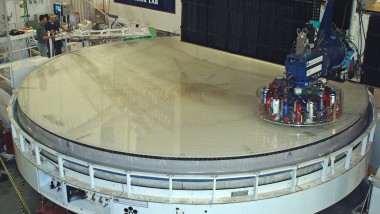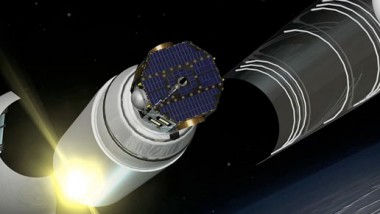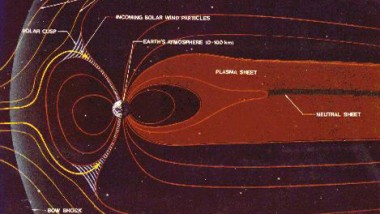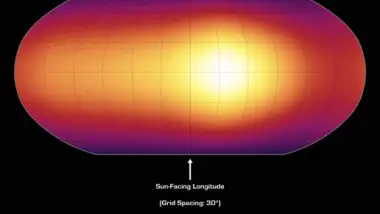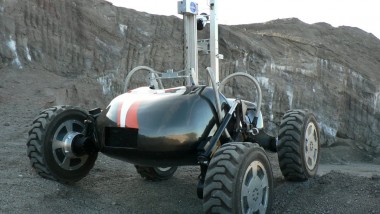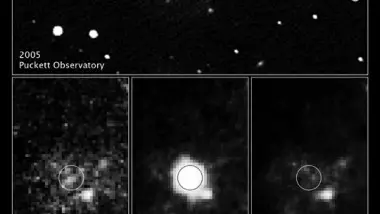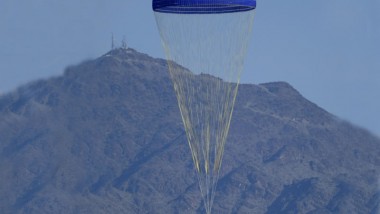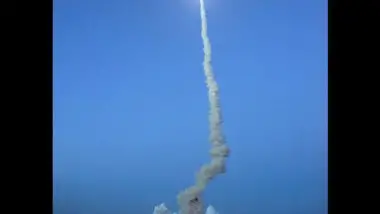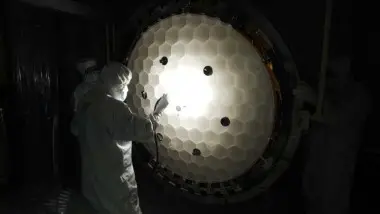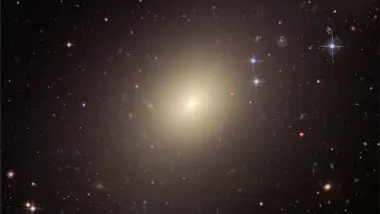Nine research institutions on three continents have signed a founder’s agreement to construct and operate the Giant Magellan Telescope at Las Campanas Observatory in the Andes Mountains of Chile. The telescope will consist of seven co-mounted 8.4 meter mirror segments ...
Diamond-Like Carbon Films Used in IBEX
Scientists at Sandia National Laboratory in New Mexico have created diamond-like thin carbon films which have now been used in the low energy sensors of the recently launched NASA Interstellar Boundary Explorer (IBEX). The smooth layer of film efficiently ionizes ...
Protective Magnetic Spaceshield
Researchers from the U.K. and Portugal are developing a portable miniature magnetosphere to protect spaceships from high speed particles traveling through space, such as plasma from solar flares or cosmic rays. The Earth’s magnetosphere protects our planet from many of ...
Carbon Dioxide…in Space?
Carbon dioxide has been discovered by the Hubble Space Telescope in the atmosphere of a planet orbiting another star. The discovery, which was recently announced by NASA is, according to the agency, an important step towards finding chemical biotracers of ...
Scarab Lunar Rover
Researchers at the Field Robotics Center at Carnegie Mellon University in Pittsburgh, Pennsylvania have designed a new lunar rover capable of being both a full scientific research platform and a drilling platform. Designed to operate in wildly changing terrain, drive ...
Huge Supernova Baffles Scientists
Scientists from the Weizmann Institute of Science in Israel and San Diego State University have observed an explosion of a star 50 times larger than the sun. In what they call a “first observation of its kind” the scientists were ...
Ares Super-Chute Tests
NASA and the United States Air Force have successfully tested a new super-chute system aimed at reclaiming reusable Ares booster rockets. On February 28, 2009 a 50,000 pound dummy rocket booster was dropped in the Arizona desert and stopped by ...
STS-119 Launches into Space…Finally
After several delays, including twice over the past week, the space shuttle Discovery has finally been launched into space. The spacecraft took off at precisely 7:43 p.m. EDT, embarking on the STS-119 mission, which will provide the International Space Station ...
NASA’s Kepler Telescope Launched Successfully
At precisely 10:49 p.m. EST, NASA’s “Kepler” telescope was successfully kicked off into space, embarking on a mission that the agency says “may fundamentally change humanity’s view of itself.” The telescope will search the nearby region of our galaxy for ...
New Galaxy Formation Theory Proposed
Astrophysicists at the Hebrew University of Jerusalem have formulated a novel theory that takes issue with the prevailing view on the origin of galaxies. Their research, which was recently published in the journal Nature, concludes that the galaxies primarily formed ...

